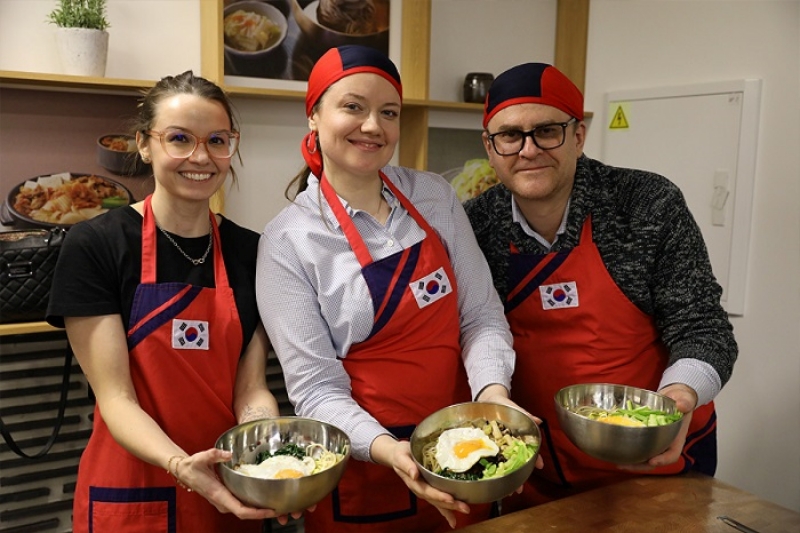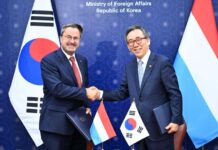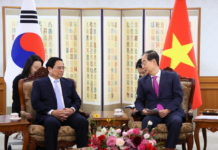
Participants in a Korean food master class held in December last year by the Korean Cultural Center (KCC) in Moscow pose for photos with bibimbap (mixed rice with meat and vegetables). (KCC in Moscow)
By Park Hye Ri
The government will push for the globalization of Hansik (traditional food) to have the domestic food sector lead global gastronomic trends by 2027.
The Ministry of Agriculture, Food and Rural Affairs on Feb. 2 at Government Complex-Seoul announced strategies to bolster the global competitiveness of domestic cuisine at an emergency meeting of economy-related ministers.
A major goal of the plans is nearly doubling the sector’s scale from KRW 152 trillion in 2021 to KRW 300 trillion by 2027. Another is to raise the number of Korean restaurants abroad to 15,000 by 2027 from 9,923 in 2020, with that of Michelin-starred establishments to surge from 21 in 2023 to 100 by 2027.
For this purpose, the ministry’s three strategies are to strengthen the industry’s infrastructure, upgrade the value of Hansik and expand the sector’s ecosystem.
First, the number of organizations for training Korean food specialists will be raised from five with some 250 staff to eight and 600 by 2027. More efforts will also go toward developing outstanding Hansik experts overseas through the opening of regular classes on Korean cooking at five world-renowned culinary schools by 2027, up from two this year.
The ministry will digitize the recipes of 100 leading Korean foods and provide content by reflecting the range of demand for Hansik like pairing food with traditional alcoholic beverages. By the first half of this year, it will also unveil the brand keyword “Adventurous Table” to spread the value of Korean food.
To promote to the world the Korean terms for domestic foods, ten such words will be selected such as ssamjang, or thick and spicy paste made with soybean paste, and makgeolli (milky rice wine). In March, the nation will also host its inaugural global gastronomy event “Asia’s 50 Best Restaurants.”
The ministry will designate the top 100 Korean restaurants abroad comprising the world’s best 1% and launch a service rating system to assess food quality and sanitation at domestic restaurants.
The formation of a “K-gourmet belt” will link Korean food, agriculture, tourism, and culture and arts and boost culinary tourism. The plan is to launch a pilot belt this year and raise the number of such regions to 15 by 2027.
Minister of Agriculture, Food and Rural Affairs Song Mi-ryung said, “We will devote all of our policy capacity to firmly position Hansik as a sector that leads global gastronomic megatrends backed by the ‘K-Culture’ craze.”
hrhr@korea.kr























